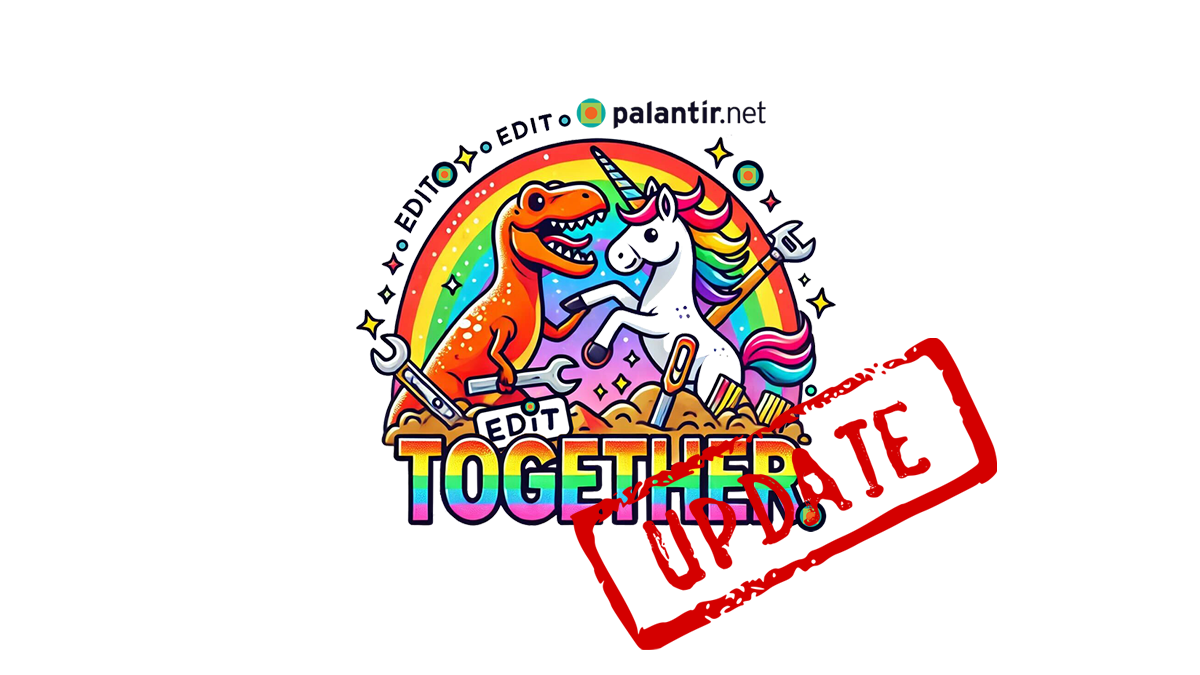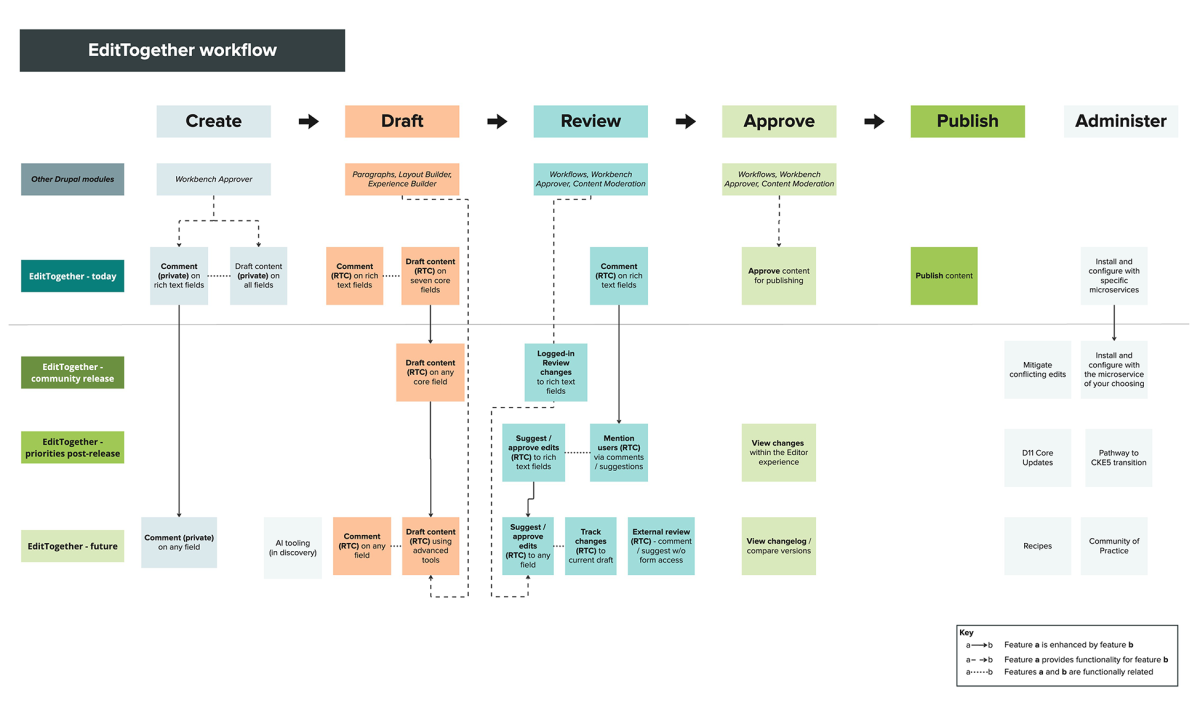What's Going on with EditTogether?
A February 2025 update on Palantir’s module for real-time, secure collaborative editing in Drupal

In 2023, Palantir’s team started building EditTogether — a field-level content collaboration framework for Drupal 10 and 11 which uses the Yjs shared editing framework to facilitate real-time field-level collaboration using peer-to-peer WebRTC connections.
EditTogether enables users to change content collaboratively on node edit forms in real time, and do so securely. To ensure data privacy, content does not go into a third-party cloud. Instead the module leverages STUN/TURN, signaling server microservices, and Javascript so your data does not need to leave the browser for you to edit it together. EditTogether is in use and usable today.
During this private beta phase, we have been developing, demoing, and listening to users. This has helped us identify the minimum viable features needed for initial backend and front-end use (the project's MVP release). We spoke to a dozen publishing departments and agencies over the Fall of 2024, gaining insight on features to ship with MVP, and features that have enough interest to attend to after an initial community release. People are looking to suggest and approve edits, mention a user, track changes, do external pre-publishing review, and view changelogs.
Members of Palantir’s team will present demos at Florida DrupalCamp and DrupalCon Atlanta – come see it for yourself! We’re also available to offer private demos upon request.
Only one end-user-facing feature is blocking us from MVP release: the ability to draft content collaboratively on any field (currently, seven fields are enabled). Additionally, before public launch we will need to address various end-user UX and accessibility requirements, allow for mitigation of conflicting edits in edge-case scenarios, and enable back-end tooling sovereignty by making it possible to use EditTogether with the microservices of your choosing.
The current and launch state feature workflow of EditTogether

While demoing, we heard functional questions about what EditTogether does natively versus what other modules support. You can read our FAQ if you want deeper technical answers, but here are answers to some frequent questions folks have asked:
- When will it be released publicly?
EditTogether will be released as a fully open source module only once it’s at a viable MVP that enables self-managed use. We had initially targeted a Q4 2024/Q1 2025 release, but the pace has slowed and our work continues on it as we are able. While the initial development work on EditTogether was sponsored by one of our clients, since last summer it has been self-funded by Palantir. - How can I help?
We’re seeking organizations that want to use EditTogether as part of the Early Access program (we’ll install and configure so you can use the module as it is) and/or are able to sponsor feature development. Such early support is also an important indicator that there is sufficient commercial interest to sustain the ongoing development and module maintenance necessary to justify Palantir’s continued investment in EditTogether. We are not looking for development assistance at this time. - Can I edit in a private draft before opening it up to my colleagues to view, comment, and collaborate on?
Yes, you can set the visibility status of your draft content using Content Moderation and Workbench Approver. Naturally, some teams may prefer people to draft in a different tool altogether, then copy into EditTogether once they are ready to collaborate. - Can I use Paragraphs, Layout Builder, or Experience Builder to lay out and comment on placement as well as content?
Currently, EditTogether works with Paragraphs, but we expect to see that capability expand after community release since EditTogether is built to be plugin extensible. - What about my stakeholders (who avoid Drupal) who need to review and want to suggest edits to content?
Today, EditTogether works with Workflows, Workbench Approver and Content Moderation for users within the logged-in workflow. We have heard an interest in creating views for users to review, comment, and suggest changes outside of the editor experience, which are features we expect to see developed after community release. - How does EditTogether align with Drupal CMS?
EditTogether’s architecture is designed to integrate natively with other Drupal subsystems and modules. We are actively monitoring innovations in the larger Drupal ecosystem - especially with content moderation, workspaces, and Experience Builder (XB) for Drupal CMS. The rapidly evolving and emergent nature of these developments has also influenced our decision to slow down our timeline to allow time for the broader Drupal decisions to shake out so that we release a module compatible with the future of Drupal.

